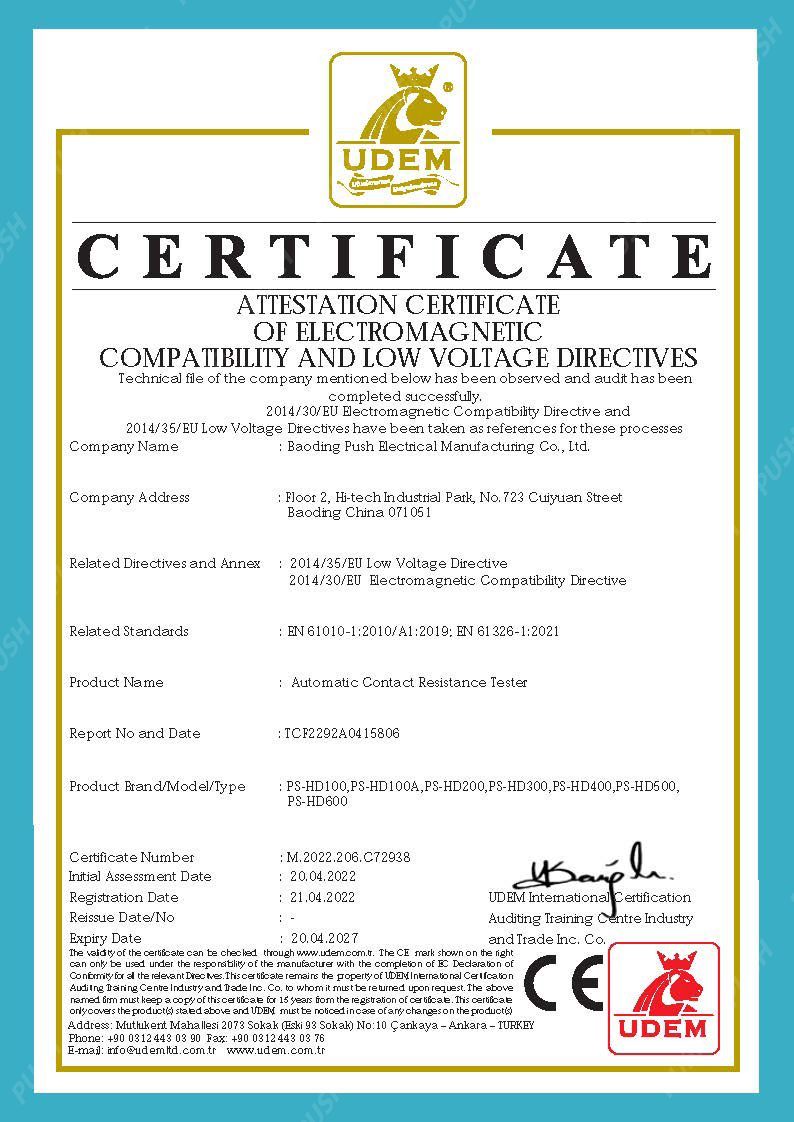 English
English


Comprehensive Guide to Earth Electrode Testing Using a Loop Tester for Accurate Results
Understanding Earth Electrode Testing with a Loop Tester
Earth electrode testing is a critical procedure in ensuring the safety and functionality of electrical systems. It involves measuring the resistance of grounding electrodes, which are essential for electrical safety in any installation. An earth electrode effectively provides a path for electrical current to safely dissipate into the ground, reducing the risk of electrical shock, equipment damage, and fire hazards. One of the common methods to test the effectiveness of these electrodes is through the use of a loop tester.
A loop tester is a specialized instrument designed for measuring the resistance of earth electrodes, as well as checking the integrity of the complete earthing system. It operates by passing a small current through the earth electrode and measuring the voltage drop that occurs. By using Ohm's Law (V = IR), technicians can calculate the resistance of the electrode by dividing the measured voltage by the current flowing through it.
The Importance of Earth Electrode Testing
The significance of earth electrode testing cannot be overstated. Proper grounding ensures that in the event of a fault, electrical current is directed away from individuals and sensitive equipment. Grounding systems must be adequately maintained and tested periodically to ensure they still meet safety standards and operational efficiency. Without proper testing, a faulty earth electrode could lead to dangerous conditions that might go unnoticed until an accident occurs.
How to Conduct Earth Electrode Testing with a Loop Tester
To conduct an earth electrode test with a loop tester, follow these outlined steps
1. Preparation Ensure all safety precautions are in place. This includes wearing appropriate personal protective equipment and ensuring that the area is clear of any potential hazards.
earth electrode test with loop tester

2. Disconnect the Earth Electrode Remove any connections that link the earth electrode to the electrical system. This step is vital to ensure that the test results reflect only the electrode's resistance without interference from other components.
3. Connect the Loop Tester Connect the loop tester's leads to the earth electrode. Generally, this involves connecting one lead to the electrode itself and the other lead to a suitable grounding point, which can sometimes be the earth rod itself or a designated ground plate.
4. Perform the Test Turn on the loop tester and initiate the testing sequence. The tester will send a low-frequency AC current through the system, allowing it to measure the resistance. It will display this resistance value on its screen.
5. Record and Analyze Data Take note of the resistance value displayed. According to safety standards, the earth electrode resistance should be below a specific threshold (commonly below 5 ohms, depending on the application). If the resistance is higher, it may indicate problems with the grounding system that require attention.
6. Reconnect the System After completing the testing and analysis, reconnect the earth electrode to the system ensuring all connections are secure and compliant with electrical codes.
Conclusion
Regularly testing earth electrodes with a loop tester is vital for maintaining a safe electrical environment. This method not only helps in verifying the effectiveness of a grounding system but also ensures compliance with safety regulations. Properly grounded systems protect both people and equipment from electrical faults, making periodic testing a necessary practice in any electrical maintenance program. By incorporating routine earth electrode testing and adhering to safety standards, we can significantly reduce risks and ensure reliable electrical performance.
-
Differences between open cup flash point tester and closed cup flash point testerNewsOct.31,2024
-
The Reliable Load Tap ChangerNewsOct.23,2024
-
The Essential Guide to Hipot TestersNewsOct.23,2024
-
The Digital Insulation TesterNewsOct.23,2024
-
The Best Earth Loop Impedance Tester for SaleNewsOct.23,2024
-
Tan Delta Tester--The Essential Tool for Electrical Insulation TestingNewsOct.23,2024





